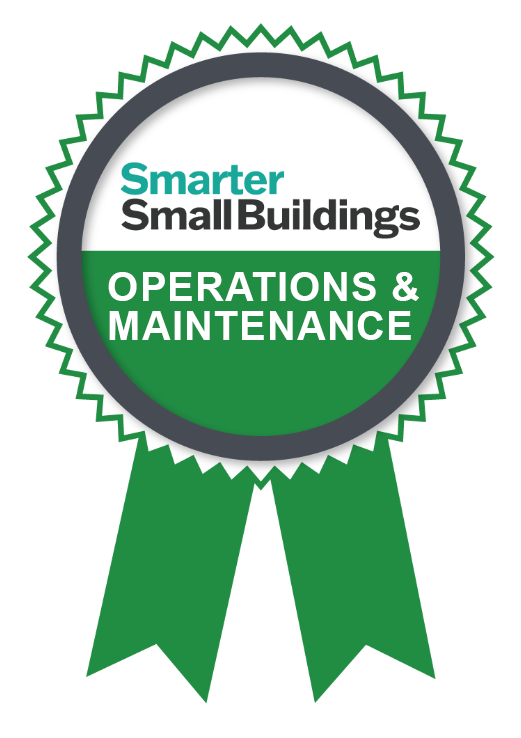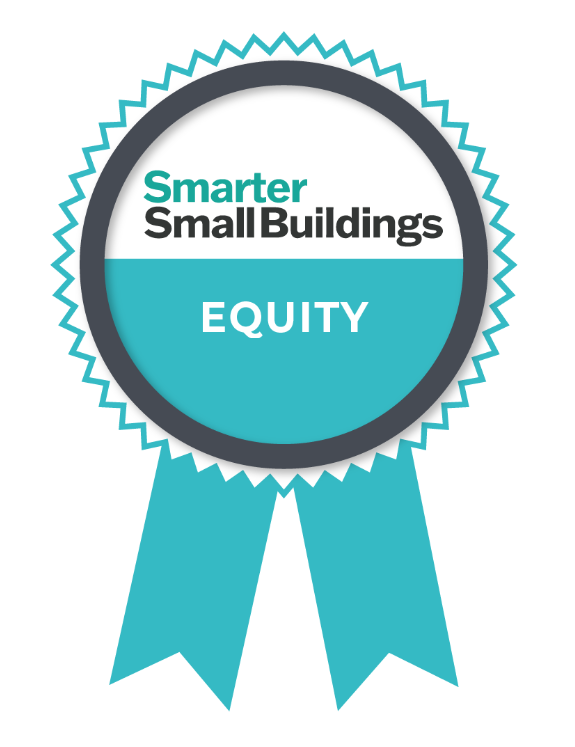2024 Recognition
The Smarter Small Buildings Campaign shines a spotlight on outstanding achievements in HVAC controls within small commercial buildings.
The Smarter Small Buildings Campaign is dedicated to promoting best practices and innovation in the world of small building controls. Building owners can submit for recognition in several different categories (see below), for their efforts installing and operating RTU controls in existing buildings and for new construction projects. Campaign partners also have the opportunity to submit for recognition for their efforts around energy justice, diversity, equity, and inclusion. Recognition applications will be accepted through May 17, 2024, and we’ll announce results in the summer.
To apply for recognition:
- Join the Campaign as a participant or partner (if not already signed up).
- Building owners: Complete the annual data survey, which includes the recognition application.
- Campaign Partners: Complete this short survey describing project/activity (EJDEI category only)
For more information about the recognition process or to get help with the application , please reach out to us at SSBC-Controls@lbl.gov.
- Pilot implementation that demonstrates the benefits of controls (lighting, HVAC, etc.) with detailed data on aspects such as measurement & verification, indoor air quality
- Plans for rapid roll-out of control technology across many small buildings
- Comprehensive & thoughtful approach to engaging internal stakeholders to define requirements

- Engaging stakeholders (e.g. maintenance team and/or third party contractors) to develop a comprehensive O&M plan
- Incorporation of workforce training to ensure staff have the skills and tools necessary to effectively manage the controls system
- Documentation of follow-through on implementing improvements recommended through use of controls
- Improved process for maintenance staff, with an emphasis on ease of use
- Implementing an occupant-centered O&M approach to minimize discomfort and disruption
- Significant energy and/or cost savings (individual building or portfolio)
- Improved occupant comfort and/or productivity documented with data such as the reduction of hot/cold calls or occupant complaints through a work order system
- Improved indoor air quality
- Installation of controls completed in conjunction with other HVAC upgrades

- Unique use of alarming and analytics
- Implementation of additional control hardware and/or sensors that allow for innovative management of buildings (e.g. occupancy sensors, demand controlled ventilation)
- Deployment of load management strategies such as: participation in demand response programs, peak load optimization, on-site thermal and/or battery storage that reduces on-peak load

- Installation of RTU controls in a building or buildings located in a disadvantaged community
- Installation of RTU controls in a building or site that offers benefits to local disadvantaged communities (e.g., installation of RTU controls at a food bank; a project that combines education on the energy savings approaches; a plan for donating or sharing cost and energy benefits with local communities, etc.)
- RTU controls installation and/or third party services provided by disadvantaged businesses (Certification is not required)
- The project or installation supports community resiliency (e.g., can be used to offset burdens expressed in community, especially during extreme adverse climate events)
*Such as those supportive of, or aligned with, the definitions from the U.S. DOE Office of Economic Impact and Diversity Equity in Energy initiative

- Organizations or individuals offering high quality jobs that are accessible to those in disadvantaged communities (DACs) through workforce training programs or other pathways
- Organizations or individuals who prioritize accountability to local communities by signing Community Benefits Agreements (CBAs) or by otherwise contributing towards equitable outcomes of surrounding communities, minimizing burden, or decreasing environmental exposure to toxins or dangerous chemicals
- Organizations or individuals who show a thoughtful and considered JDEI approach to company-level plans and protocols (e.g., internal/corporate Environmental, Social, and Governance policies) that is based on research and data and showing actual or planned impact
- Organizations or individuals who are able to increase access to low-cost capital in DACs
- Organizations or individuals who increase clean energy jobs, job pipeline, and job training for individuals from DACs
*Such as those supportive of, or aligned with, the definitions from the U.S. DOE Office of Economic Impact and Diversity Equity in Energy initiative.
- Affordable software upgrades to enable improved control without requiring new hardware
- Rapid implementation of improved RTU controls leveraging internal staff and external resources effectively
- Effective or creative use of financing/incentives/grants to manage first and ongoing costs
- Innovative approaches to achieving advanced control capabilities at low cost, such as educational institutions engaging students in control and monitoring improvement efforts